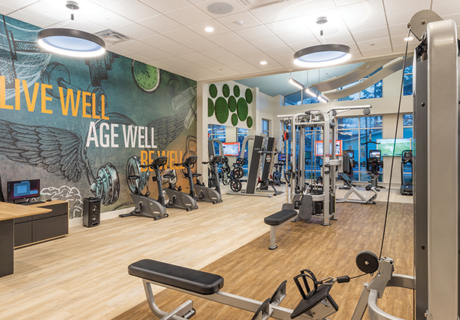Q+A: Matthias Hollwich
Environments for Aging: In the past, you’ve said nursing homes are “storage facilities.” What’s the biggest issue you have with the current approach to senior care?
Matthias Hollwich: Never in our lives are we age-segregated. We might be in school with our peers, but once we leave the building we’re with our family, friends, and people of all ages. A nursing home aggregates seniors for efficiency reasons. This is how we’re able to bring services to the masses, but it’s counterproductive. Taking people out of their favorite living environment is never a good idea, and surrounding seniors with more seniors is directly contradictory to healthy living, intergenerational exchange, informal support networks, and general happiness. We have to find a way to either diversify nursing homes or bring all levels of nursing services to homes.
You cofounded architecture firm Hollwich Kushner nine years ago and then decided to write a book. What inspired New Aging: Live Smarter Now to Live Better Forever?
I first realized that at 38 years old I had already lived half of my life for an average German man, which made me appreciate how short and precious life is. Further, I realized that most people do not live the lives they want when they get older because we don’t have the infrastructure and facilities that can make that happen. My initial reflex was to redesign retirement communities, assisted living facilities, and nursing homes—but with thousands of these places already in existence, it’s an incredible uphill battle. I wrote New Aging to redesign what people think about aging and to help society understand that everybody can and needs to make a difference. (Book cover credit: Bruce Mau Design)
You’re an advocate for community-based living options and have created conceptual designs for such communities as the LGBT-focused Boom in Palm Springs, Calif. How does this approach fill a void in senior living?
Boom was one of my first designs that tapped into the question of aging, and my own critique is that we focused only on seniors and advocated a specialized environment. My other designs look more into intergenerational living that can compensate for the social and physical deficits that come with age, such as loneliness, mobility, vision and hearing impairments, and loss of independence.
There’s an emphasis in senior living design to deliver more residential-scale settings. How would you like to advance that model?
These changes are a good first step and make care environments better for many, but the changes need to be more radical. Nobody in society is looking forward to moving into a nursing home, so why not find a way that services and care can be provided where people want to be—at home. With incredible opportunities in technology and logistics, I’m waiting for the “Uber of care” to turn the industry upside down.
What do you think needs to happen to foster a new attitude and approach toward aging and design?
We have to make it personal. We need to ask, “Where do we want to live in our future?” and then make sure we don’t work on anything that we ourselves wouldn’t like to experience. It’s that simple.
Anne DiNardo is senior editor of Environments for Aging. She can be reached at anne.dinardo@emeraldexpo.com.





